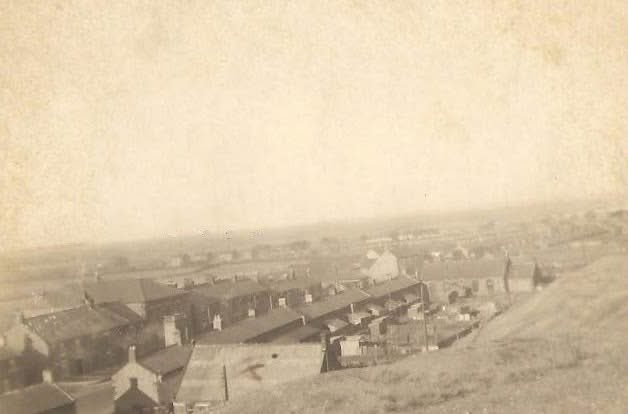
Bebside
Bebside Wesleyan Chapel
Last Updated:
27 Jan 2025
Bebside
This is a
Chapel, Place of Worship
55.125693, -1.563705
Founded in
Current status is
Extant
Designer (if known):
F B Frampton

Currently a commercial premises
I have to say this is one of my favourite Wesleyan Chapels I've ever come across. It's rustic and austere, but the fact it's half forgotten adds to its charm. The lancet arches, red brick, two tone slate roof and stone inscription make for a real treat.
This is the Bebside Wesleyan Chapel, which served the steadily growing pit village. This is the first in the settlement though the society had been here since the 1860s. They previously congregated in the colliery schoolroom & in the lecture hall, both of which grew to be unsuited to a growing community.
The chapel was opened in 1884 and was to hold 160 people maximum. It cost £356, which unlikely many was entirely paid off upon opening. It featured underfloor heating (though I can't imagine that works these days) and "elegant" internal fittings. The architect was Mr F B Frampton, a Newcastle born man who is seemingly unknown and not associated with any other project I can find.
It will be fascinating to see the principal stone when this chapel is ever pulled down. Inside features a circuit plan, the trustee list and a programme of the proceedings that day. There are planty of minor stones & bricks with inscriptions of local subscribers and the pupils of the local sunday school.
This is now one of the last buildings remaining from the 19th century in Bebside, with the landscape right behind once dominated by pit heaps. It appears the death knell of this little chapel came in the 50s or 60s, and remains a vestige of Bebside industrial tradition. Since, it has been a marine craft dealer named Cudby Marine Craft Ltd and is currently a car paint shop.
Listing Description (if available)


These Ordnance Survey maps shown illustrate Bebside at the height of its industry, between the 1890s and 1920s. This miraculous survivor sits right next to the pit heap, offset from the main road and the pit rows. You'll notice 3 seperate churches which are all Methodist - this one, a primitive chapel and the christian lay (otherwise known as Independent Methodists), which goes to show how fractious the movement was in the 19th century. They catered for the industrial community which grew over the half century prior, with the main lane and south row all crammed with terraces. There was also a school, mechanics institute and post office nearby, alongside the Bebside Inn and station on the east end of the village. It remained preserved through the 20s but much of it was cleared in the mid 20th century.

Turning back time slightly to the late 1850s now, when this map was surveyed. The village was established but much younger, with the primary row leading south split open by the waggonway leading to what became the pit head - still farmland at this time. The Inn and railway station were extant, and in the coming decades the chapels, schools and post office would be established.

Bebside Wesleyan Chapel in December 2024. Note the remains of the two tons slate which gives off this stripe effect.

The two tone slate I mentioned can be better seen on this unknown shot of Bebside village from the colliery heap. The chapel is at the bottom of the shot, with the Primitive Chapel up the way.
Unknown photographer.
